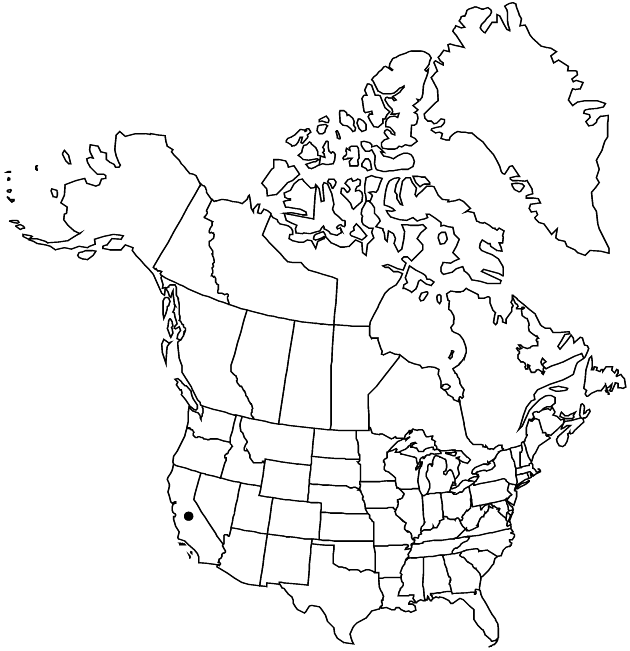Eriophyllum lanatum var. obovatum
Univ. Calif. Publ. Bot. 3: 186. 1907.
EndemicConservation concern
Basionym: Eriophyllum obovatum Greene Erythea 3: 123. 1895
Revision as of 22:57, 29 July 2020 by imported>Volume Importer
Perennials (± taprooted). Proximal leaves alternate; blades oblanceolate, margins entire or coarsely serrate, plane, faces densely woolly. Heads borne singly or 2–3 per array. Peduncles mostly 4–10 (–15) cm. Involucres 10–12 mm diam. Ray-florets 10–13; laminae 6–7 mm. Cypselae 2.5–4 mm; pappi 0.4–1.2 mm. 2n =16.
Phenology: Flowering Jun–Jul.
Habitat: Conifer forests
Elevation: 1300–2500 m
Discussion
Of conservation concern.
Variety obovatum is known only from the Greenhorn and the San Bernardino mountains (M. Skinner and B. Pavlik 1994). It is apparently entirely diploid (J. S. Mooring 1975) and is suspected of forming natural hybrids with Eriophyllum confertiflorum (L. Constance 1937). The scarcely distinguishable var. lanceolatum is disjunct by 800 km northward.
Selected References
None.
Lower Taxa
None.
... more about "Eriophyllum lanatum var. obovatum"
introrse +
connate +
herbaceous +
scarious +
absent +
hirsute +
papillate +
corymbiform +
singly +
continuous +
decurrent +
oblanceolate +
winged;ribbed;winged;ribbed +
1;15 +
stigmatic +
absent +
zygomorphic +
monomorphic +
dimorphic +
papillate +
2.5mm;4mm +
staminate +
Calif. +
straight +
woolly +
distinct +
proximal +
1;5 +
bisexual +
dispersed +
singly +
singly +
indeterminate +
surrounding +
campanulate;hemispheric +
6mm;20[mm +
2mm;7]mm +
alternate +
cauline +
glabrous +
papillate +
deltate +
plane +
2-carpellate +
inferior +
attached +
anatropous +
persistent +
falling +
absent +
coroniform +
tough +
thick +
absent +
connate +
scarious-margined +
persistent +
herbaceous +
falling +
unequal +
equal +
alternate +
Univ. Calif. Publ. Bot. +
1907 +
pistillate +
absent +
fertile +
epaleate +
glabrous +
convex;conic +
fibrous +
exalbuminous +
modifed +
1;2 +
alternate +
branched +
2-branched +
papillate +
Eriophyllum lanatum var. obovatum +
Eriophyllum lanatum +
variety +
campanulate +
equaling +
shorter +
perennial +
subshrub +
